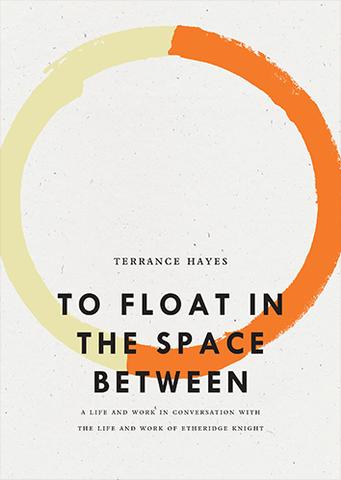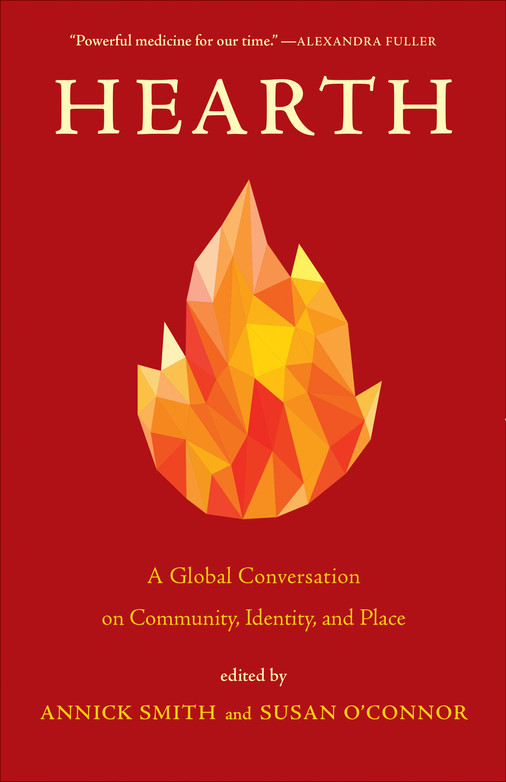By Denise Wilkinson
on White Matter: A Memoir of Family and Medicine by Janet Sternburg
Janet Sternburg grew up in a tight-knit, lower-middle-class Jewish family, in Boston, the niece of a lobotomised uncle and aunt. Uncle Bennie, before his lobotomy, was diagnosed with schizophrenia and, while he had “good spells,” he could quickly turn into a frightening and violent man. Aunt Francie was “timid and withdrawn,” unable to work, prone to weeping for days and attempting suicide. At the time, lobotomy was hailed as “one of the most important discoveries ever made in psychiatric therapy,” with the promise that mentally ill patients would be relieved of symptoms, recover, and be “socially rehabilitated.” This was achieved by drilling holes in the patient’s skull, inserting an instrument through the holes, and cutting blindly until the patient became drowsy and disoriented. This procedure caused irreparable damage to the frontal lobes, literally cutting off the ability to imagine, empathize, and hope.
While it seemed a normal part of her childhood to have two relatives undergo the very invasive surgery, which disconnected their brain’s white matter in the hopes of a better life, it gives us pause–two frontal lobotomies in one family?–and, as an adult, it gave Sternburg pause, too: for “only then did the so-called ordinary return as mystery.” As soon as the author professes to accept her childhood as normal, she contradicts herself. “With the sharp return of memories” she writes, “came the realization that even as a child I had a slight awareness, compounded from fear and pity, that something wrong had been done, that it couldn’t be right for people to be this way, expressionless and indifferent to anything around them.”
One day Bennie returned home from the hospital in a “prolonged unnatural half-sleep.” He did not speak, and his eyes were dull and unchanging. The menace was gone, but so was the quality that made Bennie an individual. How then, Sternburg wonders, could her family have gone ahead with Francie’s procedure? The doctors said it would be different, and this was true; Francie was able to live independently, and she did quit weeping all the time. But she, too, lost the quality of self. The results of Bennie’s lobotomy and then Francie’s plagued the family’s conscience, begging the difficult questions Sternburg tackles in her memoir: How does fear and knowledge inform our choices and “how do we live with the decisions we make?”
It is a book, indeed, about contradictions. How could her mother and her aunts see themselves as “good, kind people who went out of their way to help others” but also give two of their siblings over to lobotomy? How could a doctor abandon his commitment to the profession in favor of personal glory? How could Sternburg herself be drawn to and afraid of her own family? I loved the struggle of this book, and Sternburg writes it beautifully: the wrestling with that which has no answer, or at least an answer which won’t sit still. Who would Bennie have hurt if he hadn’t been lobotomized? He had already attacked one family member. What would have happened to Francie if given a little more time? Would she have “come back to a self she’d never really known but that was out there waiting for her” or would she have continued to be a burden on her family? Did the sisters agree to the lobotomies to save their siblings or to save themselves?
In trying to chase down the answers, Sternburg traces the history of lobotomy and considers how it intersects with her own family history. Having accumulated volumes of research, she doles out just the right details at just the right times. I appreciated her short section “A Little Primer on the Frontal Lobes” but I must admit, I was temporarily confounded by her final paragraph. “I have a feeling that we’re living in the age of the frontal lobes, and that soon it will be over. There’s a gee-whiz quality to all this; ‘We have found the key and this is it.’ Every bone in my body says don’t believe it, that it will turn out that there is neither key nor location to being human.”
I like being confounded, though. I like digging through a book. I like talking to the author in this way. The answer, as answers usually do, came from a surprising place; I was in church listening to my pastor, and a snippet of what he was saying jumped out at me: People look for solutions and erase possibilities they don’t understand. It, like Sternburg’s words, has an ominous air to it, and rightly so. If we erase possibilities, we erase hope. Lobotomy was a Nobel Prize-winning advance in medicine, a promising breakthrough. And yet, in the long run, it was a solution that erased hope as it erased Bennie’s and Francie’s essence. Sternburg’s memoir searches for this lost hope.
While her research into lobotomy provided much documented information, tracing her family story was more difficult. Complicated by the fact that only one aunt, Pauline, remained alive, and the information Aunt Pauline provided “overturned everything” Sternburg had believed all her life, she questioned whether she could get to the truth. “If I were to try, I’d have to begin by going back to a time before I was born. I’d have to rely on stories told to me by my mother and other aunts, especially Minna, herself suspicious in Pauline’s view. And I’d have to supplement them with my imagination, which I’d hope would be scrupulous–as close as possible to the stories as I’ve heard them–but which would inevitably lean toward fiction.”
As a recent graduate of an MFA program in Creative Nonfiction, I was especially interested in this concept of using imagination, of leaning into fiction, in memoir. It got me thinking of my own story, of how I had sat with my grandfather as he became weaker in the hospital. I spent hours with him there, chatting about irrelevant topics such as the weather and the food, avoiding all the questions I would have loved to ask about our family history, but was too afraid to. Now I am left with only the stories I remember and the ones my parents tell me, which are muddled by time and influenced by their own perspectives. Now I, too, must use my scrupulous imagination in writing my own story, so I get the idea of supposing and “perhapsing.”
Indeed, much has been taught in creative nonfiction programs and much has been written on the technique. Generally, I appreciate how Sternburg uses her scrupulous imagination. However, in supposing the scene of Harry, Francie’s estranged husband, contemplating going back to her, Sternburg puts herself in his head, imagining with an air of omniscience what was going through his mind. “He thought about how he disgusted himself, those rolls of flab, that weak little nothing between his legs. Sometimes he’d think about how Francie and he had really been made for each other, if only . . . .” This supposition took me out of the narrative, leaving me to wonder how Sternburg could know what he was thinking.
Sternburg’s examination of her family, at times, reminded me of Judith Kitchen’s Half in Shade: Family, Photography, and Fate. Sternburg questions perspective and gathers information while she fills in those shadows she can never see into for sure. She tries not to judge the past by the standards of the present, but considers the status the doctor would have held and the trust her family put in him. “The final decision to go ahead with Bennie’s lobotomy,” she writes “must, I think, have been based on faith in Myerson who was, after all, familiar—a Russian Jew from the same wave of immigration as their mother’s—and also a higher mortal endowed with authority. The older sisters lived in a world where they believed there were exalted people like Myerson and little people like themselves.”
Even after seeing the results of Bennie’s surgery, the sisters decide to have a second sibling lobotomized. “They must have thought they were doing the right thing,” she writes, and then challenges herself by asking, “What would I have done?” What, indeed? What would any of us have done—the question invites us to consider our own choices and the choices which have been made for us. There is the faith that says we and others make the best decisions we can based on given information. There is also the niggling argument that, as Sternburg’s Aunt Minna said, “It was the times.” But that isn’t proof enough. Sometimes choices are influenced by fear. Sometimes we just don’t know enough.
In her quest to learn more and change perspectives, Sternburg’s attention turns on occasion to old photographs. One in particular is of her lobotomized Uncle Bennie, who is pictured standing in the backyard at a family gathering. He is wearing a white shirt, bow tie, chef’s hat, and apron which reads “Barbecute.” One arm hangs limp at his side, while the other is bent at the elbow across his body, his hand holding a spatula, which points off to his left. She shows the image to a friend who knows nothing of her story. He says “[i]t’s a picture of incongruities” and “[Bennie] seems too perfect, as though someone had posed him that way,” causing Sternburg to reconsider. “When I looked again,” she writes, “I saw a more fundamental strangeness, a person at the farthest reaches of not being at home in the world, in the midst of a tribe that had damaged him and also kept him safe.” Ah, those contradictions!
The contradictions in how Bennie was taken care of also appear in Sternburg’s own family life. She muses, “I think now that our DNA is made up of twisted strands of pathology and creation. One is toxic; the other would save us.” Creation for her is writing, and it is her saving grace. Despite the conflict and discord she writes of, her memoir is full of beautiful moments within her family such as her lyric description of bringing Uncle Bennie home after a family Thanksgiving. “When we pulled up at the curb, my mother got out of the car to help Bennie, but before she could get to his side he let himself out and began to twirl on the sidewalk, our family dervish whirling in his own slow trance, a bludgeoned brother swimming through our family’s undercurrent.” It is a small, lovely scene of survival and hope amidst all that has been lost.
In White Matter: A Memoir of Family and Medicine, Sternburg wrestles with contradictions as she searches for the truth of a vexed past, “which is always leaking into the present.” She reminds us that we are, “all of us living with struggle and looking for grace.”
White Matter: A Memoir of Family and Medicine by Janet Sternburg
Hawthorne Books
$18.95 clothbound | Buy Now!
Denise Wilkinson is the first international student to receive an MFA in Creative Nonfiction at Ashland University; this is the closest she has come to thinking being Canadian qualifies her as being exotic. She resides in Prince Albert, Saskatchewan where she shares her love of all things wordy with her high school English students, her two writing groups, her ever-so-patient husband and two sons, and, when no one else will listen, her Pomeranian terrier. A chapter of her thesis manuscript can be found in the Saskatchewan Writers’ Guild’s Grain Magazine: The Journal of Eclectic Writing. Denise’s wildest dreams include relaxing on a powder-sand beach in the sun with no papers to mark and having a book of her own for other people to read and review . . . favorably, of course!























































































































